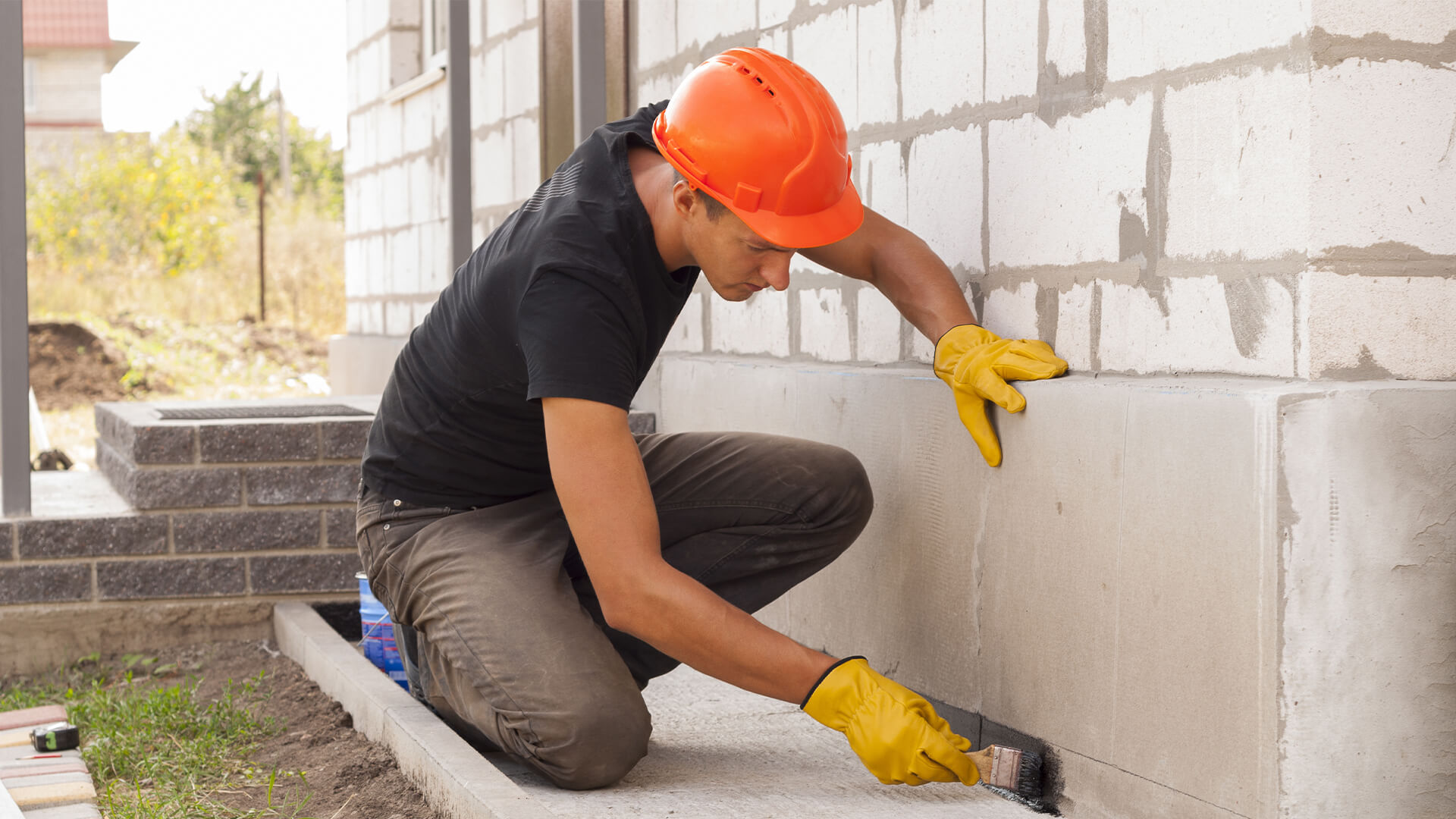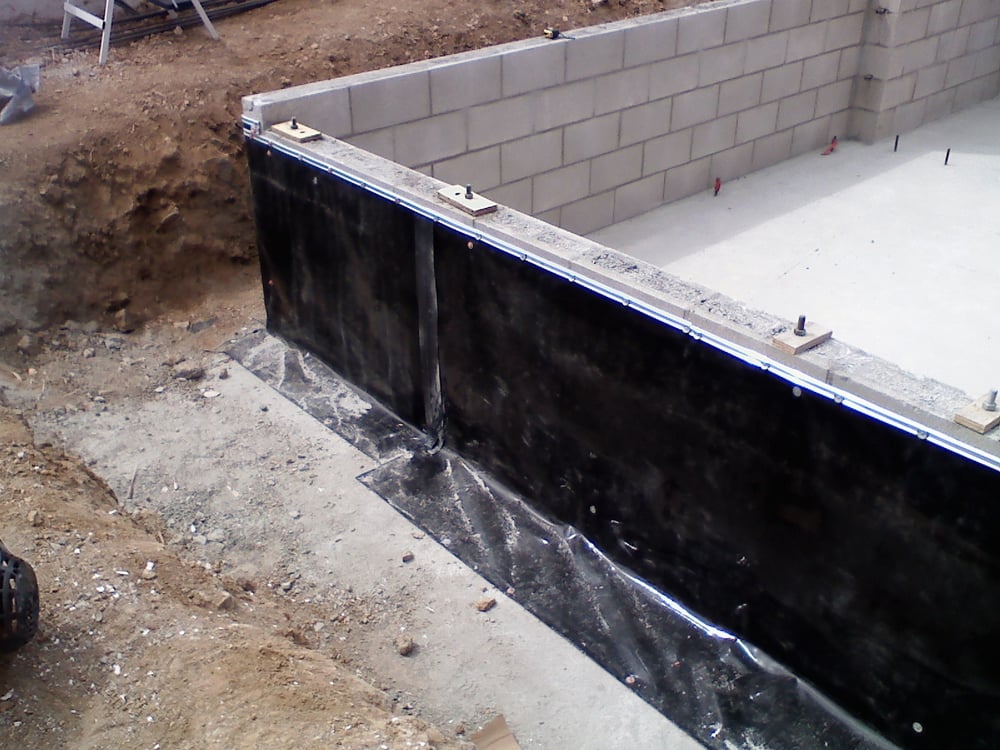Exactly How Waterproofing Functions: A Detailed Consider Strategies and Technologies
Waterproofing is important for securing frameworks from moisture-related damage. It entails different methods and technologies that produce barriers against water intrusion. Traditional methods, such as compressed clay, exist together with contemporary technologies like liquid-applied membranes. Comprehending the nuances of these methods is important for efficient application. Nevertheless, the performance of any type of waterproofing service hinges not only on the techniques made use of but additionally on continuous maintenance and examination. What are the vital factors that influence lasting performance?
Understanding the Basics of Waterproofing
Waterproofing is a vital procedure that secures frameworks from water breach, which can result in significant damage in time. This technique involves the application of numerous materials and techniques developed to create a barrier versus moisture. The main objective is to avoid water from passing through surfaces, which can create damage, mold growth, and structural instability.Various variables affect the option of waterproofing approach, consisting of the kind of structure, its place, and ecological conditions. Comprehending the physics of water movement and the residential properties of different materials is crucial in selecting an effective waterproofing solution.Effective waterproofing not only safeguards structures however additionally boosts their long life and honesty. Commonly, it is incorporated into the layout phase of building to ensure complete protection. As understanding of water-related concerns grows, the significance of recognizing waterproofing principles ends up being progressively clear to engineers, building contractors, and home owners alike.
Conventional Waterproofing Approaches
Standard waterproofing approaches have been used for centuries, relying on time-tested strategies and products to safeguard frameworks from water damages. One of the oldest techniques involves using clay, which, when compressed, develops an all-natural obstacle against dampness. Furthermore, asphalt, a sticky, black product originated from oil, has been employed for its water-resistant buildings, typically related to roofing systems and foundations.Another technique includes the application of lime-based plasters, which offer a breathable layer that allows wetness to leave while stopping water access. Thatch roof, a conventional method still seen in some cultures, offers exceptional waterproofing because of its securely packed straw layers.Moreover, the use of stone and brick has actually projected, as these materials are naturally resistant to water when effectively set up. Overall, conventional waterproofing methods emphasize the importance of picking ideal materials and building practices to improve durability against water intrusion.
Modern Waterproofing Technologies
Innovations in modern waterproofing technologies have actually transformed the way frameworks are safeguarded from water damage. Innovative strategies such as liquid-applied membrane layers and innovative sealants have boosted the performance and convenience of waterproofing services. These technologies permit for seamless application, decreasing the threat of leaks and guaranteeing complete coverage over complicated surfaces.Moreover, the integration of wise technologies, such as moisture sensing units and automated tracking systems, enables real-time evaluation of waterproofing efficiency. This aggressive approach helps with prompt upkeep and lowers long-term fixing costs.Additionally, improvements in spray-applied coverings provide quick application and superb attachment, adapting to various substratums while offering robust security. Techniques like polymer-modified systems additionally boost adaptability and longevity, making them ideal for varied environments. In general, contemporary waterproofing innovations not only minimize water breach yet also add to the long life and sustainability of frameworks, noting a substantial shift in the market.
Products Used in Waterproofing
The effectiveness of waterproofing solutions heavily depends on the materials made use of in their application. Various products are employed to produce barriers against water access, each with distinct homes fit for different settings. Generally utilized materials consist of membrane layers, finishes, and sealants.Liquid-applied membranes, commonly made from polyurethane or acrylic, create a seamless barrier that adjusts to complicated surface areas. Sheet membranes, usually constructed from rubber or polycarbonate, offer resilience and are ideal for bigger areas. Furthermore, cementitious waterproofing products, made up of cementitious compounds, give excellent attachment and flexibility.Sealants made from silicone or polyurethane are essential for joints and seams, guaranteeing complete security. Moreover, advanced products, such as geo-composite membrane layers, integrate numerous functions, improving performance. On the whole, the choice of waterproofing products is essential in achieving durable and reliable Find Out More water resistance, tailored to specific project requirements and ecological conditions.
Typical Applications of Waterproofing
Waterproofing plays an essential role in various markets, ensuring the long life and stability of frameworks. Common applications consist of domestic solutions that shield homes, industrial facilities that safeguards organizations, and industrial setups that require durable security against dampness. Understanding these applications highlights the relevance of waterproofing in maintaining both safety and performance across different settings.
Residential Waterproofing Solutions
Numerous property owners deal with difficulties with wetness intrusion, making efficient domestic waterproofing services important. Numerous methods exist to resolve this problem, including exterior and interior waterproofing systems. Inside solutions frequently involve the application of sealers and coatings to basement walls, which aid avoid water infiltration. Exterior methods usually consist of the installment of drain systems and water-proof membranes that divert water far from the foundation.Additionally, property owners may consider sump pumps to eliminate water buildup and dehumidifiers to control moisture levels. Appropriate grading and making use of seamless gutters also play an essential duty in taking care of water flow around the home. By carrying out these approaches, property owners can significantly decrease the danger of water damage and mold development, ensuring a completely dry and safe living environment.

Commercial Facilities Defense
Efficient waterproofing solutions play an important role in the defense of business infrastructure. Water Solutions. These strategies are necessary for guarding structures, parking structures, and bridges from water damage, which can jeopardize architectural stability and lead to costly repair services. Common applications consist of the installation of membrane layers, finishings, and sealers that create barriers against wetness infiltration. Areas such as basements, roofing systems, and outside wall surfaces are commonly focused on to assure longevity and toughness. Additionally, waterproofing systems can improve energy efficiency by stopping water-related issues that might cause mold and mildew growth and damage. By applying durable waterproofing steps, residential property owners can shield their financial investments and maintain operational performance, eventually adding to the overall sustainability of commercial facilities
Industrial Applications Introduction
While different sectors face special difficulties, the demand for reputable waterproofing services continues to be a consistent in commercial applications. Industries such as production, construction, and power often experience atmospheres where moisture direct exposure can jeopardize architectural integrity and operational effectiveness. In making facilities, waterproofing is critical for shielding machinery and browse around here materials from water damage. In building, it safeguards structures and basements versus groundwater seepage. The energy sector relies on waterproofing for the protection of tools in hydroelectric plants and overseas frameworks. Furthermore, food handling markets use waterproofing to assure hygiene and conformity with security standards. Generally, efficient waterproofing solutions are necessary for boosting durability, safety, and performance across various commercial setups.
Maintenance and Longevity of Waterproofing Solutions
Waterproofing services are made to use long-term protection against wetness breach, routine upkeep is essential to guarantee their efficiency and longevity. Routine examinations play a substantial role in recognizing prospective concerns such as splits, peeling, or signs of water damages. Resolving these issues without delay can protect against more degeneration and pricey repairs.Additionally, cleaning up the surface of waterproofed areas helps remove dust and debris try this web-site that can jeopardize the integrity of the waterproofing obstacle. It's likewise recommended to reapply safety coatings or sealants as suggested by makers to maintain excellent performance. Ecological aspects, such as UV exposure and severe weather condition conditions, can impact the life expectancy of waterproofing products, making normal analysis essential
Often Asked Questions
Can Waterproofing Be Applied in Winter?
The concern of using waterproofing in cold climate elevates issues about attachment and healing. Numerous items might not carry out at their best in reduced temperatures, requiring careful selection and consideration of specific guidelines for efficient application.
How Much Time Does Waterproofing Normally Last?
The duration of waterproofing efficiency differs based on materials and ecological aspects. Usually, it can last from 5 to 10 years, however normal maintenance and assessments are necessary to assure peak efficiency and long life.
Is DIY Waterproofing Effective and Safe?
The efficiency and safety of DIY waterproofing rely on numerous variables, including worldly quality and application method. While some people accomplish acceptable results, others might encounter concerns that compromise lasting defense and structural honesty.
What Are the Indicators of Failing Waterproofing?
Signs of failing waterproofing consist of visible water discolorations, peeling paint, mold growth, mildewy odors, and dampness in walls or ceilings - Water Solutions Omaha. These indications recommend compromised obstacles, requiring punctual assessment and possible removal to protect against more damage
Just how Do I Select the Right Waterproofing Specialist?
